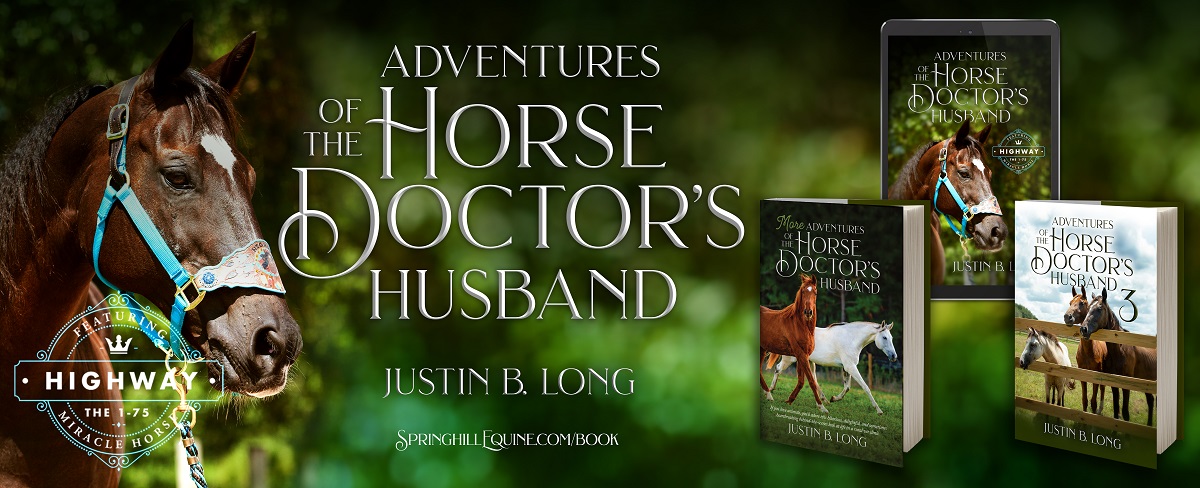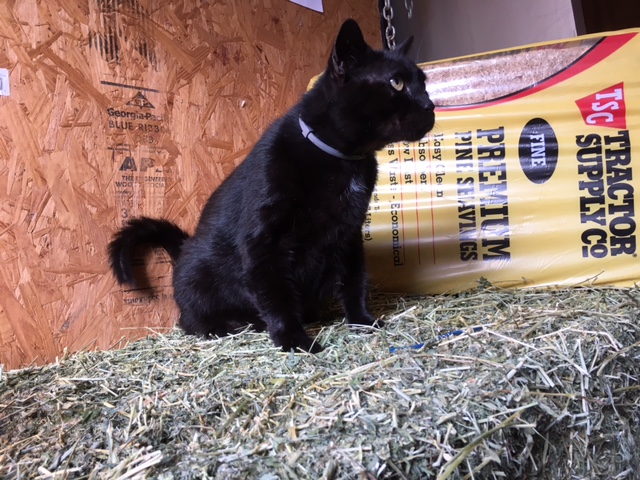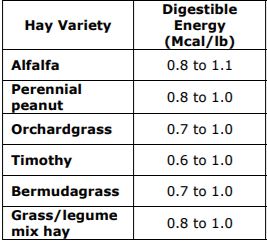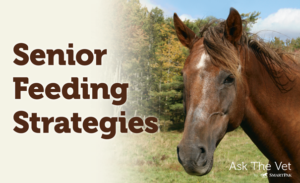
Apr 4, 2017 | Events, Feed, Hay, Retired, Seniors, Weight loss/gain
Garbage in, garbage out, or so I hear from the humans. Here I sit munching on a nice grasshopper. They have a great flavor; I recommend you try them, especially roasted with a bit of salt and pepper! Great nutritional choices like this are what keep this cat in top physical condition. Senior feeding strategies for your horse will keep them running at peak performance, too.
Ch-ch-ch-changes
You sang it, didn’t you? I know I did. Then I had images of the movie Shrek play through my head. OK, back on track. You have made wise decisions for your horse’s diet (your own, not so much) and things have been going great. However, as horses get older, their diet needs change, and those changes are very different from the ones humans experience. Doing a very thorough evaluation of body condition score, muscle quality, and diet should be done at least every six months on every horse. (Need help? My minion, Beth, has tons of nutrition experience and can help you formulate a custom plan. In fact, Wellness Plans include this!) If you notice topline shrinking, maybe the ribs are a little easier (or harder) to find, or eating is taking a long time, it may be time to adjust the diet.
Protein, Protein, Protein
You’ve been monitoring your horse’s condition, and have noticed the muscles on the topline are slowly fading away. Maybe there are fat pads cropping up by the top of the tail and behind the shoulder blades. It’s just plain harder to maintain condition. Protein is the answer. Well, part of the answer, anyway.
We have been well trained not to increase protein for older people and animals, but, as usual, horses are weird. It’s important to remember that basic diets for horses are pretty low in protein, usually around 10-12%, versus cat diets which hover around 30-32% protein. This means adding protein to equine diets is a relative thing. The easiest way to add protein is with a ration balancer. Just about every major feed company makes a ration balancer. Enrich Plus, Triple Crown 30, Equalizer, and Empower Balance are all examples of ration balancers. Adding a pound or two of one of these to every feeding is often all the older guys need.
When do I switch to Senior Feed?
Maybe never. While 15 years old is our guideline for Super Senior, it’s just that: a guideline. Dr. Lacher’s 27 year old horse is still on a “regular” feed, SafeChoice Maintenance. Full on Senior concentrates are best suited for horses with very bad teeth. These diets are designed to meet all the nutritional needs of a horse: grain, roughage, vitamins, and minerals. Most of our Seniors have pretty good teeth which means they can get loads of nutrition from hay. As long as your Super Senior is doing well on a regular diet, there’s no need to switch to senior feed.
If not Senior feed, then what?
Okay, you’re having some trouble maintaining topline, but there’s also some fat pads creeping up beside your horse’s tailhead, and you currently feed SafeChoice Maintenance and coastal hay, along with 4-5 pounds of alfalfa hay. Oh, and your horse just turned 17 years old. You ride 3-5 days every week and would put yourself in the moderately in-shape category. Now what?
There’s loads of options out there, but a little tweaking will go a long way here. First, let’s increase the quality and quantity of protein. Dropping back on the amount of SafeChoice Maintenance and adding Empower Balance will increase protein while decreasing calories overall. Trying this simple change for 30 days, while monitoring body condition, may be all the adjusting that’s needed. However, if you aren’t satisfied after 30 days, we can tweak the hay choices, or even switch concentrates all together. My point is: You’ve got options and I’ve got minions to help you with those options.

Want even more information? Want my pawtograph? Come out to the Super Senior Seminar April 19th, 2017 at 6:30pm!
See you there!
-Tony
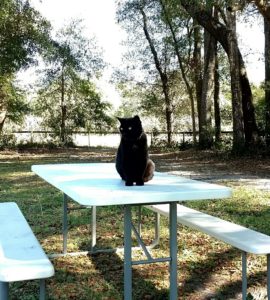
Jan 24, 2017 | Ailments, Colic, Deworming, Feed, Hay, Uncategorized

Colics. We see a heck of a lot of them. Now a decent amount of those colics can be attributed to the fairly ridiculous design of the equine GI tract. I mean, honestly, who thought that was a good idea? However, I spent my weekend pouring through the computer to look at colics the Docs saw last year. That’s right, I spend my weekend working. What’s a cat to do when it’s far too windy for civilized folk to be outside but sleep in the sun and play on the computer?
I would like a drum roll here to acknowledge my hard work, so please play one in your head now….
Our Docs saw 318 colics last year. Of those colics, three went to surgery. That’s right, three. Four others needed surgery, but for a variety of very good reasons their owners weren’t able to take them to surgery. I did remove one very specific type of colic from those numbers, but I will explain why later. I’m going to start with the moral of story: Most colics don’t need surgery. There you go. You have the punchline. Now, let’s move on to some helpful guidelines to avoid seeing Dr. Lacher and Dr. Vurgason for… umm… ‘unscheduled opportunities’ to spend money on your horse.
Alfalfa (or peanut). I’m not talking about the bad hair day or the comic strip. I’m talking hay. Feeding coastal hay is very, very strongly associated with an emergency visit from one of my Docs after hours. Coastal hay in a round roll virtually guarantees you will see my Docs for an emergency. If you run out of round bale hay, cold weather moves in, and you put out a new round bale, make sure you throw plenty of alfalfa or peanut hay alongside. Feeding a minimum of 4-6 pounds of alfalfa or peanut hay daily will go a long way towards preventing this cause.
Be obsessive-compulsive about water. The old adage “You can lead a horse to water, but you can’t make them drink,” exists because it’s so true. If you even have a doubt about how much water your horse is drinking, get water into them. How, you ask? Watch this handy video about how to make colic soup for your horse. Besides colic soup, adding a bit of molasses to the water, or giving them a small amount of salt slurry will entice some to drink up. Each horse is different; work with your horse to figure out what works best.
Manage your horse’s environment. If your horse is in a sandy area, keeping plenty of roughage going through the system is a great way to prevent sand build-up. Psyllium is also an option here for the horse who needs fewer calories, but hay works better than anything else. For the Fall season, be aware of acorns. Acorns are like cute little field mice for cats: bite size morsels of deliciousness. Too many can lead to gas, and we all know gas can be painful. Acorns are tough to avoid, but our Docs have used muzzles and creative electrical fence configurations to help.
Finally, let me go back to that one particular colic: lipomas. Lipomas are a fatty tumor that grows in the area of the small intestine in older horses. It happens in skinny horses and fat horses alike. Lipomas are associated with age. They are not because of nutrition, bad or good, management, or any other factor you can control. These tumors are wicked. They wrap up a section of small intestine much like the bolos used by Gauchos, and strangle it until it dies. If a small amount of intestine is trapped, and the colic is caught early, surgery can be very successful. Unfortunately, many of these horses aren’t found for a few hours and by then surgery is very risky, with laminitis a very real risk about 72 hours post surgery.
Colic sucks. There’s no other way to put it. A little work on the diet and a dash of environmental management, and it will suck less. Want help with a diet plan? Contact my trusty minion Beth. She’s super smart when it comes to everything equine nutrition! And now I’m off to supervise the Clinic.
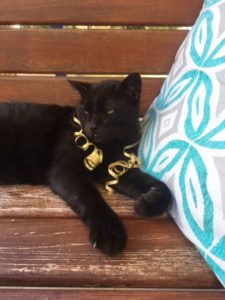
Dec 27, 2016 | Competition Horses, Events, Exercise, Hay, Weight loss/gain, Wellness Program

It’s that time of year when you humans like to work on some goals for the upcoming year. I listed mine out to show you how easy it can be: 1. Improve human response time to food demands, 2. Get better at using the computer so I can order my own cat treats, 3. Continue to find new and improved sleeping locations. Now see how easy that was? Look at what’s going on that you feel needs to change or improve and write down a goal to address it. OK, here we go.
Eat better. Beth looks at equine diets all the time and her mantra: simplify, simplify, simplify. Most of you humans like to make life sooo complicated. Go with quality hay, then add quality concentrate, then add supplements only if your horse needs them for a specific problem. This plan makes life easier and so much less expensive. Don’t believe me? Check your inbox later this week for Beth’s amazing breakdown on how much cheap feed costs!
Exercise more for the fat horses (like this cat). I struggle with this one, mostly because I hate to exercise. As a black cat living in Florida, it gets hot and I whine a lot and I end up spending the day laying around in the air conditioning. And that’s how I ended up with diabetes. The average horse needs to slow jog for about 15 minutes 3 times weekly to prevent founder and other serious fat horse problems. Commit to that time with your horse and you will stop so many problems in their tracks.
Exercise more for those show horses. Injuries happen at exhaustion. When your horse gets tired, muscles don’t respond like they should, legs end up going weird directions, and BAM! an injury occurs. Do your horse a favor and put in the time needed to have them truly fit for what you want to do. A good general guideline is to be able to do twice as much as you need to do in the show ring. Be sure you aren’t just drilling on “horse show moves.” Cross training is important! Riding horses on different types of terrain and footing helps them learn how to handle anything you crazy humans throw at them. Jumping your dressage horse, or trail riding your western pleasure horse helps keep the brain engaged and builds up different muscles than their normal, everyday work.
Learn something new. This is mostly for you humans. There is always a ton of research out there about the equine athlete. Oddly, there’s not much on the feline athlete. Look for a new exercise for you and/or your horse, read the latest science research on horses, get a lesson or sign up for a clinic. Step outside your comfort zone. You will be a better human for it.
One last New Year’s Resolution: Get your horse a Wellness Plan. With one simple call, e-mail, even text you can cross Better Health and Save Money off the list. You won’t have to remember when your Coggins is due, wonder if you have all the right vaccines, and you have freed up time and energy to eat better, exercise more, and learn something new.
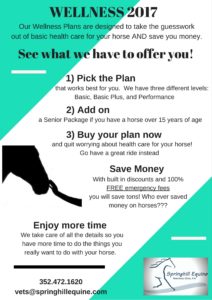
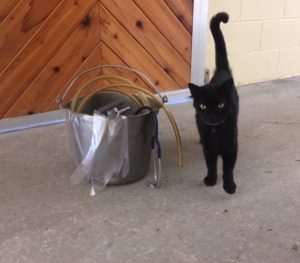
Nov 29, 2016 | Cold weather, Colic, Hay
This week I would like all of you to sit back and relax while I tell the story of Dr. Lacher’s Thanksgiving. It’s a tale of joy and sadness. It’s a tale of three colics with much in common with that other story about three things: Goldilocks and the Three Bears.
It started on Wednesday evening around 6pm. A little peek into the lives of our veterinarians: most of you call about colics around 7-8am and 5-6pm when you head out to feed. Matt, the 30 year old pony, had been normal at breakfast, but on arriving home from work, his owner found him down and rolling. Dr. Lacher was leaving the clinic to head home, so she simply turned left instead of right and headed to Matt.
As she pulled up to the farm, Jane said, “Matt has lived here for the last ten years and has never had a sick day in all those years! I’m so worried!”
Dr. Lacher replied, “I will be honest, I’m very worried too, but let’s get Matt some sedation and pain relief and see what we have going on.”
Our Docs see a lot of colics. Once you see your first 10-15 colics, you start to notice little things (and sometimes big things) the moment you pull in to a farm. The horse has a pained look in his eye, there is sweat at the flanks, he isn’t just laying down, he’s going up and down repeatedly, and many more subtle signs tell our Docs that things are worse than they seem.
For Matt, it started with his history. A thirty year-old horse with no history of colic suddenly colicing is very often bad. Dr. Lacher noticed Matt had a sheen of sweat over his entire body as soon as she got close to him. Added to that, Matt simply couldn’t get comfortable. He wasn’t quietly laying down; he was up and down and up again in the 30 seconds it took to drive up the driveway.
“I’m giving Matt a large dose of sedation and a morphine-type drug for pain,” Dr. Lacher informed Jane. “Next, I’m going to draw a small amount of blood to run a lactate test.”
“We use lactate in the Emergency Department!” Jane replied. Jane is the nurse you want to have if you ever end up in the Emergency Room. She’s fantastic!
“Yep, we have been using it in horses in much the same way human doctors do for the past 6 years or so. We want his number to be less than 3.0,” said Dr. Lacher. Jane and Dr. Lacher stared at the lactate meter for the longest 13 seconds in history awaiting results. The number loomed large at 7.2.
Dr. Lacher took a deep breath, “That’s not a good number. Let’s see if we can figure out why it’s so high and then we can make decisions from there.” Jane nodded her agreement.
After passing an NG tube in to Matt’s stomach, a rectal exam, and an abdominal ultrasound, it was determined Matt had a strangulating lipoma. This is a fatty tumor that forms over many years. One day all the forces of Mother Nature align and the tumor wraps around the small intestine and cuts off the blood supply. The only cure is colic surgery and this is not one of the “easy” colic surgeries. This one is long, very hard on the horse, and is often followed by a horrible bout of laminitis.
“I think there is only one decision I can make,” Jane stated. “Matt has had a great retirement and a wonderful life. I don’t want him to experience all that pain!”
So under a beautiful sky full of stars, Dr. Lacher and Jane walked Matt to the back field and said goodbye to him. Jane told him how much he was loved and how much she appreciated all he had taught her daughter. Dr. Lacher reflected on all the things these great old horses have contributed to the people around them as she drove home.
‘Twas the night before Thanksgiving and all through the house not a creature was stirring not even a mouse. When what to my wondering ears should I hear but the sound of the BeeGees singing Staying Alive. OK, I wasn’t actually there, but this is what I heard from one of the cats that lives at Dr. Lacher’s house. Around 12:30am her phone rang with another colic. This time it was, Zippy, a 28 year old Morgan with no history of colic.
“Uhoh,” said Dr. Lacher, “Here we go again. I really worry about the old guys colicing!”
Weekend/Emergency Tech/Awesome Husband Justin replied, “So, where are we are heading to?”
This time as Dr. Lacher and Justin pulled up to the farm they saw a horse laying quietly on his side. He was calm as Dr. Lacher put her stethoscope to his chest and abdomen.
“36,” Dr. Lacher stated matter-of-factly “and some gut sounds.”
“36 is good?” asked his owner, Linda.
“36 is very good!” Dr. Lacher replied. Turns out heart rate is one of those important things our Docs use to determine how bad your horse is actually colicing. Anything less than 48 is pretty darn good. Anything over 60 is very worrisome to our Docs. Dr. Lacher went on to explain that the fact that Zippy was laying quietly and willing to remain standing were good signs. Zippy had a calm eye, some gut sounds, and wasn’t sweaty or agitated. All really good signs. His lacate was 1.8. That’s really, really good.
Dr. Lacher put on the big, long sleeve and did a rectal exam. “It’s one of the few ways we have to figure out what’s going on inside this big abdomen. And I’m happy to say that all his parts seem to be in the right places, though he does have a bit of an impaction in his large colon,” she reported.
Dr. Lacher gave Zippy some sedation, muscle relaxers, and pain relievers. Then she and Justin tubed him with our scientifically formulated electrolyte mixture for colics. This formula helps horses get water in to the GI tract which breaks up the impaction. It also had just the right amount of sodium and potassium in there to correct deficiencies colicky horses often get.
“Call me if you need me or have ANY questions,” called Dr. Lacher as she and Justin headed home for a few hours of sleep.
Thanksgiving morning arrived quietly, for about 30 minutes. Around 7:30am the BeeGees were at it again. Stayin Alive could be heard coming from the house as Dr. Lacher and Justin fulfilled their horse feeding duties. This time it was Stephanie calling about her horse, Blue. He was uncomfortable and definitely not interested in breakfast. Personally, I can’t imagine not being interested in food but horses are weird.
As Justin and Dr. Lacher pulled up to this colic Dr. Lacher said, “Oh we are going to be OK with this one.”
“How can you possibly know that?!?” exclaimed Justin.
“I just do,” was Dr. Lacher’s reply.
Allow me to explain what Dr. Lacher meant by “I just do.” Blue was standing in his stall, looking at his sides but not trying to lay down. He had no hay, shavings, or grass on his sides or back, letting Dr. Lacher know he hadn’t been rolling much, if at all, before Stephanie found him acting colicky. Blue also just plain didn’t look as painful as Matt, or even Zippy. His eye was quieter, and while he was clearly uncomfortable, he just wasn’t as frantic as Matt. Dr. Lacher did her exam on Blue and confirmed her suspicions. Blue had a heart rate of 36, gut sounds all over his abdomen, and some gas on rectal palpation.
“Blue is going to be just fine. He has a typical gas colic. They do great with some sedation to relax them, Banamine to help with the pain, and a whole lot of fluids and electrolytes pumped in to help overhydrate them,” Dr. Lacher explained as Stayin’ Alive sounded from the truck. It seemed the Thanksgiving weekend was going to be a long one.
The phone call was from Zippy’s owner. He was still unhappy. While he wasn’t as uncomfortable as the previous evening, he wasn’t interested in food and was laying down quietly. After talking through the possibilities with Linda, Zippy got to go for a trailer ride to the Clinic. I love when the horses come to the clinic so I can perform CAT scans on them!
Zippy was definitely uncomfortable when he stepped off the trailer at the clinic. Dr. Lacher performed her usual exam on him and found his heart rate was a bit high at 48 beats per minute, and he didn’t have the greatest gut sounds. She put that long glove on again and did a rectal exam. Zippy’s impaction was softer but it was still there.
“Sometimes these impactions need a little bit more help. Let’s get an IV catheter in Zippy and get him started on some fluids. I’ll tube him with some more fluids too, just to make sure he is super hydrated,” said Dr. Lacher.
Zippy got started on IV fluids and got some more medication to help his pain. Then Dr. Lacher pulled out her ultrasound machine.
“Because Zippy isn’t back to normal, I’m going to use the ultrasound to look inside his abdomen a different way and see if any of his small intestines are distended or if there’s free fluid,” Dr. Lacher explained.
Zippy’s ultrasound looked great. His small intestine wasn’t distended and I could see it moving on the screen. That was pretty cool. There also wasn’t any free fluid around the intestines. Dr. Lacher told us this would show up as black areas between the intestines. She said Zippy’s large colon was also looking pretty darn normal. While we were checking stuff, Zippy got another lactate. We all breathed a sigh of relief when it was 2.6, a little higher, but still a pretty good number.
By late afternoon on Thanksgiving as I was finishing up the turkey bits Justin brought me, Zippy began looking for food in his stall. This is a really good sign. When colics start looking for food Dr. Lacher always gets really excited. I thought poop was a better sign, but she says they can poop and still be colicing, and that looking for food usually means the colic is all better. Zippy continued to be fed small amounts throughout the night and got to home on Friday morning. I’m sure Linda was very happy to have him back!
I hope you have enjoyed my tale of three colics. I learned a lot about what our Docs look for in a colic. Heart rate seems like a really important clue. If you want to learn how to take your horse’s heart rate, come on by the Clinic or ask us when we are out at your farm. Our Docs and Technicians are always happy to teach!
Until next week,
Tony
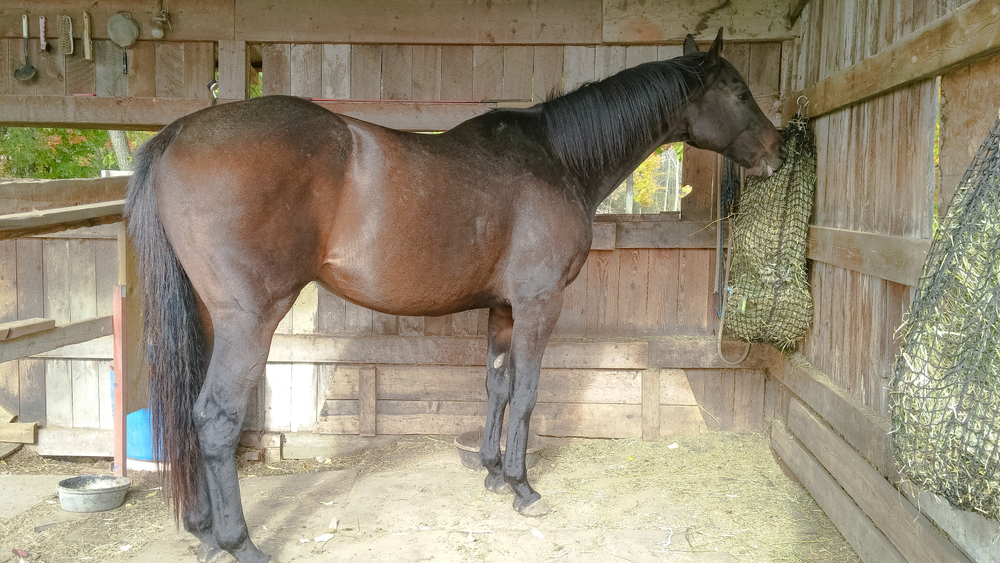

 Whinny’s Wisdoms is the official blog of Whinny the Clinic Mouse at Springhill Equine Veterinary Clinic in Newberry, Florida. If you liked this blog, please subscribe below, and share it with your friends on social media! For more information, please call us at (352) 472-1620, visit our website at SpringhillEquine.com, or follow us on Facebook!
Whinny’s Wisdoms is the official blog of Whinny the Clinic Mouse at Springhill Equine Veterinary Clinic in Newberry, Florida. If you liked this blog, please subscribe below, and share it with your friends on social media! For more information, please call us at (352) 472-1620, visit our website at SpringhillEquine.com, or follow us on Facebook!